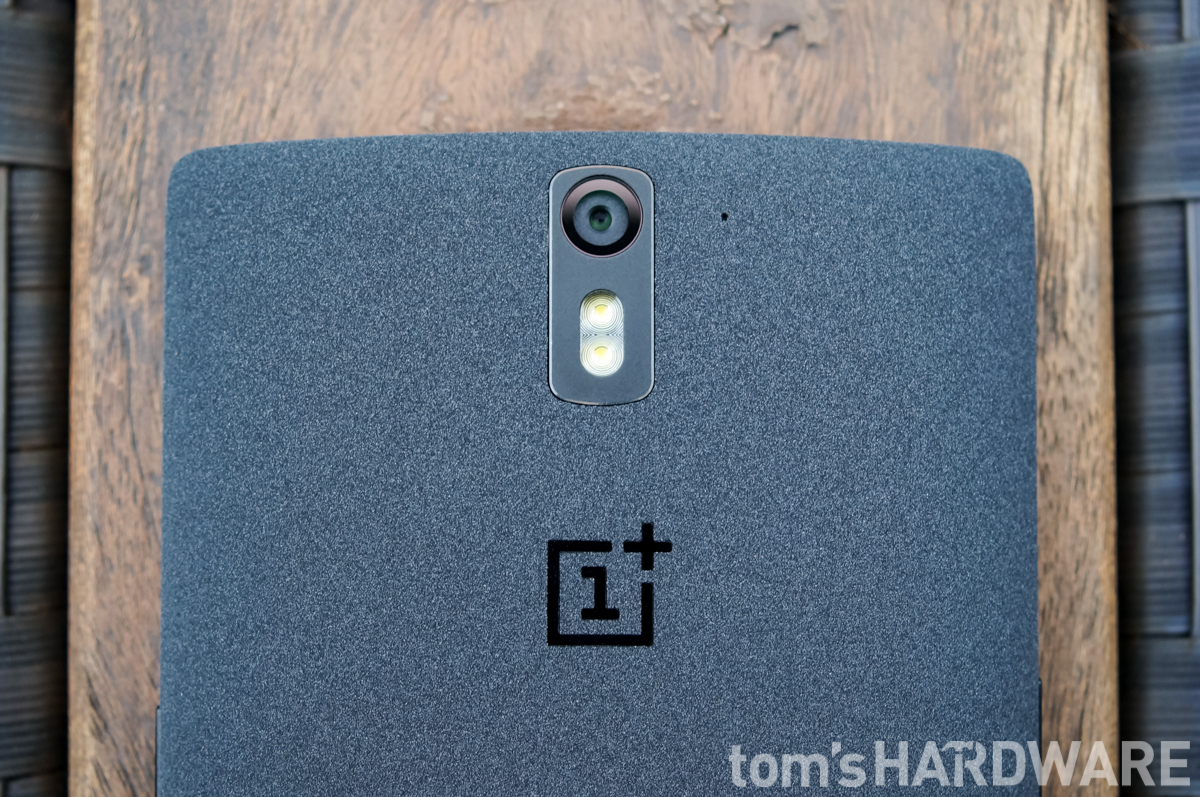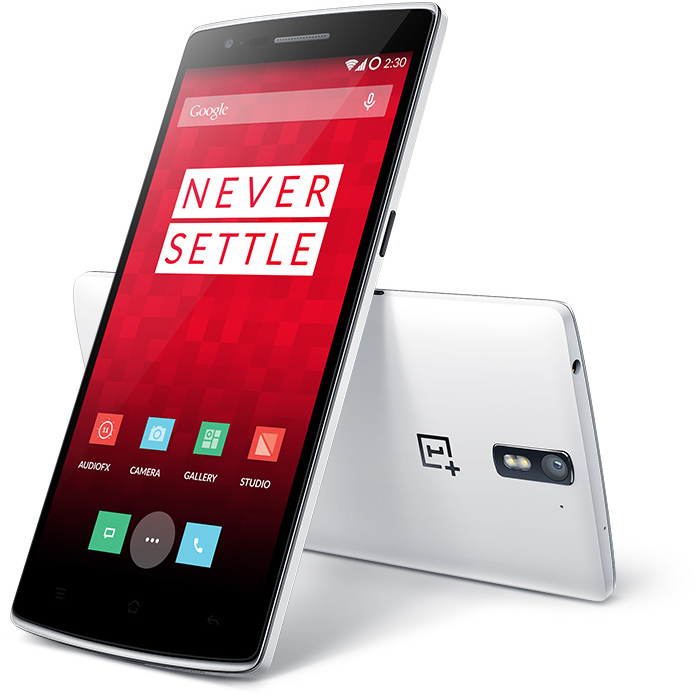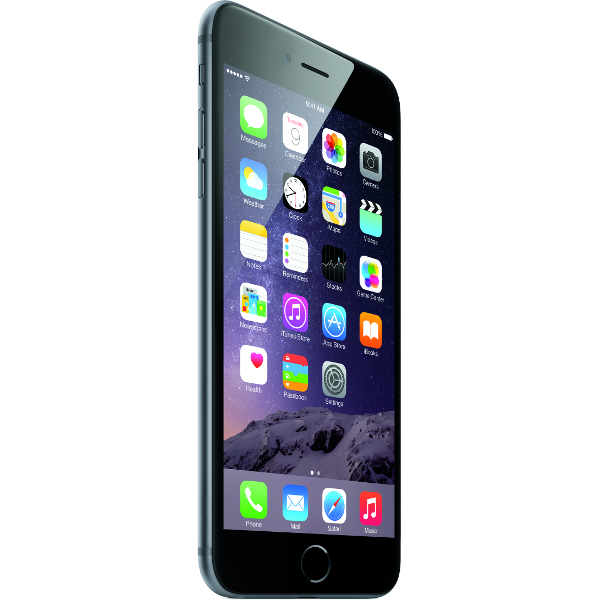OnePlus One Review
The OnePlus One has an off-contract price starting at only $299, but don’t call this smartphone cheap. Hiding behind the OnePlus One’s 5.5-inch HD screen is some high-end hardware.
Why you can trust Tom's Hardware
Camera: Hardware
The OnePlus One’s camera, like the rest of its hardware, belies this phone’s low price. With a 13 MP Sony sensor, f/2.0 lens, dual LED flash, and 4K video capabilities, the One’s camera is equivalent, at least on paper, to other top smartphones. However, a phone’s post-processing software also plays an important role in the quality of the final image. Does the One’s software match the caliber of its hardware?
(*while the iPhone 6 sensor can go up to ISO 2000, testing shows that on the iPhone 6 Plus ISO is limited to a max of 500)
Looking at the chart above you can see that the One’s camera compares quite favorably to its competition. It uses the new Sony 13 MP IMX214 sensor that has a comparable pixel size to most of its Android competition, including the LG G3 and Galaxy S5, which means it should have comparable low light performance. Only the HTC One (M8) and iPhone 6 Plus boast bigger pixel sizes. The new Sony IMX214 sensor features SME (Spatially Multiplexed Exposure) HDR technology, which means the sensor is able to capture HDR video at 4K 30 fps and 1080p 60 fps. The sensor also has enhanced noise reduction and improved low light performance.
The One’s lens has an aperture of f/2.0, one of the widest found on any current smartphone, which should further enhance low light images by allowing more light to enter the sensor. The maximum ISO that you can manually set on the One is ISO 1600. In automatic mode, the sensor is capable of capturing at even higher ISOs. While we weren’t able to determine the highest ISO it is capable of, we did shoot images at up to ISO 4500.
Along with the aforementioned improved HDR capabilities, the One also has a 6-element lens, minimizing distortion that can be caused by having such a low aperture lens. With the most recent software update, the One is now capable of shooting in the RAW format, which we will discuss in more detail below.
Other than the HDR improvements from the sensor, 6-element lens, and RAW capabilities, the One’s camera does not have any additional features. It doesn’t use any techniques to improve focusing, such as the phase detection focus of the Galaxy S5 and iPhone 6 Plus. It also doesn’t have Optical Image Stabilization, which in our opinion is a big omission. OIS is found on the LG G3, iPhone 6 Plus, and Note 4, and improves both low light still capture performance and video capture quality. And while the One does have a dual LED flash, both LEDs are the same color, unlike the ‘True Tone’ LEDs found in the iPhone 6, whose different color LEDs produce a more natural looking flash light.
On the video side of things, OnePlus does not hold anything back and maximizes the capabilities of both the IMX214 sensor and the Snapdragon 801’s ISP. The One supports more video resolutions than any smartphone we’ve looked at and is the first smartphone that can record 4K video in the wider 24 fps DCI (Digital Cinema Initiatives) format. It can also record in regular 30fps UHD 4K, 1080p, 720p, 480p, and a variety of even lower resolutions. Unlike many competing smartphones, the OnePlus One is not limited to capturing only five minutes of 4K video. Although, if you were to record some long 4K clips, you can consume the One’s base 16 GB of non-expandable storage pretty quickly.
Get Tom's Hardware's best news and in-depth reviews, straight to your inbox.
One bizarre omission is 1080p 60fps recording; the one records standard 1080p video at 30 fps and only slow motion at 60 fps. With YouTube now supporting 1080p 60 fps, let’s hope OnePlus adds a regular 60 fps 1080p video mode in the next update.
While there’s much to like about the One’s camera, its physical position on the phone is a pain point. The problem is that the lens is too close to the top edge, which makes it very easy to cover the lens by accident when holding the phone in landscape with two hands.
As for the front-facing camera, the One does have one of the highest resolutions of any smartphone at 5 MP. It also has a wide f/2.0 aperture and 80° wide lens that should improve the quality of group selfies taken in low light.
Overall the One’s camera hardware and features are comparable to other high-end phones with only a few omissions, likely to reduce cost. Now let’s see if the One’s software can unlock the hardware’s full potential.
-
MrEssesse You forgot to mention how the iphone 6 plus costs 299 $ with a 2 year contract, unlocked its around 700 $.Reply -
Mike Coberly So the device itself supports the CDMA bands, but is not compatible with one of the major CDMA carriers here in the US? What a shame. :( This could easily replace my now aging Galaxy Note 3.Reply -
Memory Ever Summary is all kind of noise voice out because it's a China phone.Reply
If this is a phone from Apple, people will only ask when they can buy it. They don't real care about of the specification.
This is the different. -
house70 Got one for my wife, she loves it, esp. that she doesn't have to keep an eye on the battery icon anymore. This thing will run forever... Getting another one for myself.Reply
For about USD 350 you can't really do any better. They could sell it for 550-600, but they won't.
CM12 (Lollipop- based) is around the corner.
Only thing they botched really big was the sales; this phone had a huge potential to when first launched, but making it almost impossible to buy doesn't help. -
uplink-svk As owner of three 1+1 phones I'm heavily dissapointed with this phone. I really loved the Crysis Music trailer, and there I decided to go for this phone.Reply
Things that really dissapointed me are:
- display is yellowish, at least was on all three pieces I owned
- it's made out of cheap plastics, I don't care it feels "great", I wanted metalic phone, like they said it's gonna be in the beginning
- one of the pieces was doing purplish photos
- it's way too big
- CM is fine, but still misses some of the basic features offered by 3rd party GUi from Samsung/HTC, which are in my eyes normal - RMAing the 1+1 is a hell, You need to send it back, wait and stuff, thank You, but no
In general I bought the first one for 290 euro, second one for 250 euro, and third one for 390 euro, which are pretty good prices in my country for these phones, and all were a disaster :\ -
rexter This is what Nexus 6 should have been - price-wise. Watch out Google here's OnePlus. Too bad, you'll need an invitation to get one, why not invite me instead if I give them my e-mail; this just show that the company don't have much stocks to share to every, I suppose? and that pink wall paper reminds me of Ubuntu. I like the black one if I can get my hands on one... or two.Reply -
Karksken Can you use this one as phone too or is it just a tablet(review). Smartguys please give us on smartPHONES also the real info as Phone quality, connection quality, e.a. info when you get the out of memory error when there is still a lot of mem available and you SIM is disconnected. How does the apps interact with the phone part.Reply -
D A The invites are easy to get with a little patience. I just bought three of them in the last tow weeks. All my invites I got where from google + where previous buyers are giving out the invites hourly. Jut go onto Google plus and do a search for "Oneplus Invite", then click "MOST RECENT". be patient and keep refreshing and be ready to respond to a post where someone is offering an invite... respond with your email address that you would like one. I did this for all three of my invites, there was only one person that did not send me the invite. I was able to get all the invites within an hour.Reply



